Don't you just love watching bumble bees?
This morning we watched a yellow-faced bumble bee (Bombus vosnesenskii) foraging on lavender. It moved quickly from one blossom to another, barely allowing us time for a "bee shoot." It was "bee gone" every time we aimed the camera.
Finally, it cooperated.
Native pollinator specialist Robbin Thorp, emeritus professor of entomology at the University of California, identified it as a male, the first (photo of a male Bombus vosnesenskii) he's seen this season.
He thinks a prize is in order.
Well, okay!
Thorp, co-author of the newly published Bumble Bees of North America: An Identification Guide (Princeton Press), and Davis photographers Gary Zamzow and Allan Jones and yours truly usually have a friendly competition to find and photograph the first bumble bee of the year, of the month, of the day, of the minute. Well, almost. It's "Bumble Bee Alert" a lot. On Christmas Day, I managed to capture an image of a black-tailed bumble bee, Bombus melanopygus, foraging on jade blossoms at the Benicia Capitol State Historic Park, Solano County. (The black-tailed bumble bees emerge much earlier than the yellow-faced bumble bees.)
Now a Bumble Bee Watch group has launched a website to track bumble bee populations across the U.S. and Canada. This is a collaborative effort among several conservation groups and universities, according to the website and they need your sightings, including photos. As a spokesperson said: "The information will help researchers determine the status and conservation needs of bumble bees, and help locate rare or endangered populations. They will also help with identification!"
Well, today, I watched one male Bombus vosnesenskii, and he watched me.
My prize? Just enjoying--and appreciating--nature at its finest.
(Note: How can you distinguish a male from a female Bombus vosnesenskii? Said Robbin Thorp: "Boy bumble bees have an one more segment in the antenna and the abdomen than females do. The tip of the abdomen is also more rounded. Male bees do not have any pollen transport structures. In bumble bees, this means that the hind tibia is much more slender than in females which have corbiculae (pollen baskets). In Bombus vosnesenskii there is a second partial yellow band on the abdomen on T-5."
"The most accurate test of female vs male bumble bees, is to pick up a specimen with a bare hand. If you get stung, it is a female, if not, it is a boy bee. Boy bees can't sting, because they have no stinger. But I do not recommend this test unless you already know the answer! :)"
Attached Images:
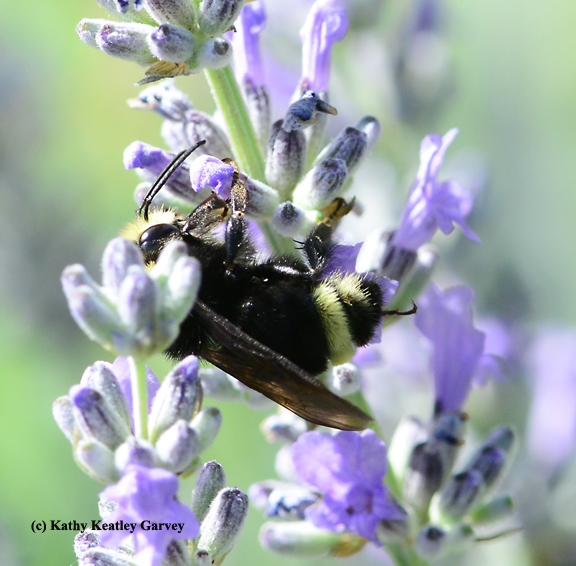
A male yellow-faced bumble bee, Bombus vosnesenskii, appears to be "resting" on lavender. (Photo by Kathy Keatley Garvey)
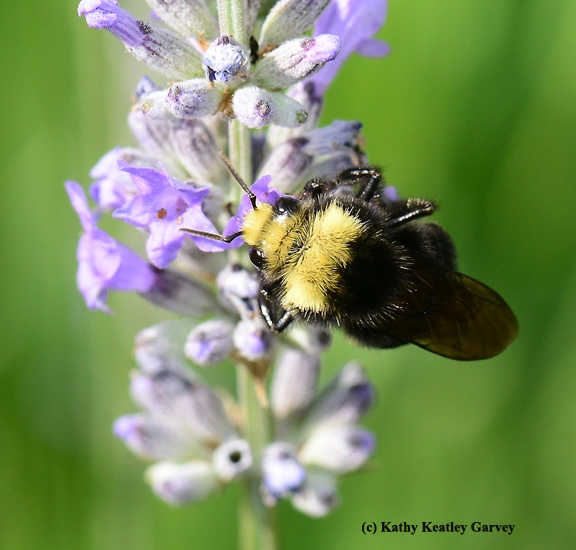
Another view of the male yellow-faced bumble bee, Bombus vosnesenskii. (Photo by Kathy Keatley Garvey)
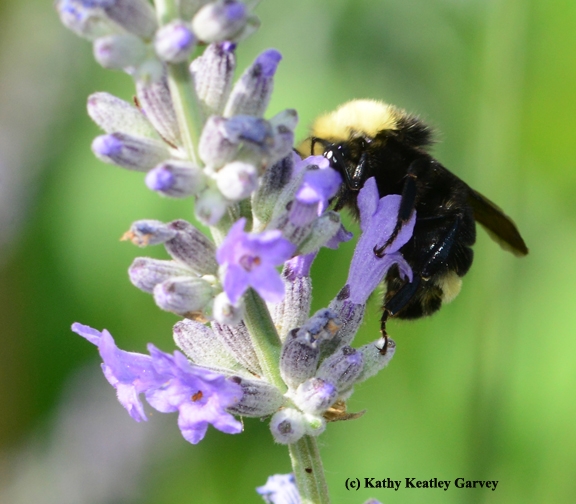
Side view of the male yellow-faced bumble bee, Bombus vosnesenskii. (Photo by Kathy Keatley Garvey)
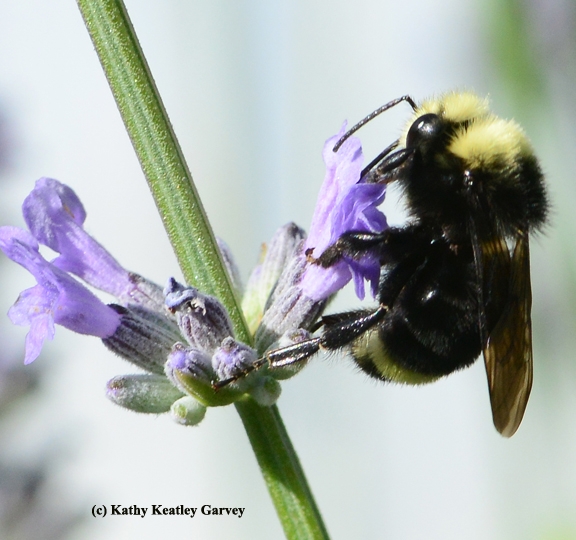
Lavender is what it's all about. (Photo by Kathy Keatley Garvey)
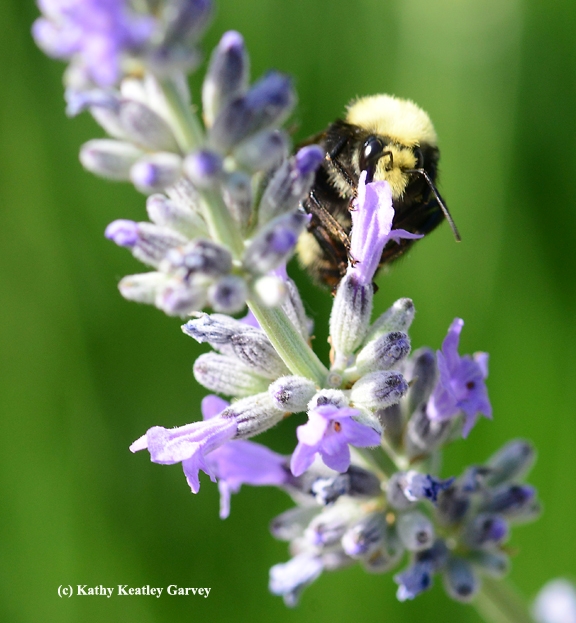
Peek-a-bee! The male bumble bee peers over a blossom. (Photo by Kathy Keatley Garvey)